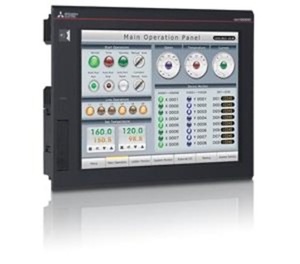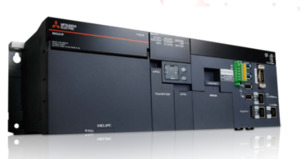

|
Edward Lowton
Editor |


|
| Home> | Plant, Process & Control | >Automation | >Ensuring deployed equipment works in harmony |
Ensuring deployed equipment works in harmony
16 August 2023
Digital transformation is a key talking point right now and automation can facilitate the introduction of lights out manufacturing, boosting productivity by allowing production sites to keep run-in 24/7.

THERE IS currently a great deal of talk throughout the industrial sector about digital transformation and the benefits that come with it. By implementing higher degrees of automation, production sites can keep running 24/7, with little or no human involvement needed.
Through this lights out manufacturing, such sites can achieve elevated productivity levels. This approach can also remove human errors, improve yields and dramatically reduce the likelihood of product returns - thereby bolstering profit margins and improving brand reputation.
In terms of managing overall operations, the advanced network infrastructure now being rolled out within factories is enabling access to unprecedented quantities of data, with valuable insight subsequently being gained. The upshot of this is that workflows can be examined to find where improvements might be made - leading to boosts in throughput, better product quality, less wastage and heightened energy efficiency.
Availability of a greater wealth of relevant information also opens up opportunities for predictive maintenance, which allows an understanding of equipment at a granular level. Any functional issues impinging on the production capacity can be identified and defective parts pinpointed (then repaired or replaced). The working lifespan of equipment can be extended and unwanted downtime safeguarded against.
Going even further, digital twins of machinery or even whole factories can be constructed from compiled data. Using these virtual equivalents, different scenarios could then be played out - instead of having to do tests on actual equipment (where there would be a risk of it being damaged). The implications may then be ascertained by running machinery faster or conducting a process with different parameters (heat, pressure, etc.) applied.
Making the dream a reality
Although this all sounds exciting, bringing it to fruition is not necessarily that simple. Often there is a dislocation between the information technology (IT) aspect of a factory, that manages the processes, and the operation technology (OT) aspect, which is responsible for controlling and monitoring all the equipment. On the IT side, data is transferred through high-speed Ethernet networks. Computing hardware and servers have relatively short replacement cycles and this has accelerated technological evolution here. In contrast, on the factory floor things move at a slower pace, making the situation a lot more complicated.
Factory facilities will be filled with turning equipment, drives, presses, conveyors and suchlike that may have all been fitted a long time in the past - before the emergence of the Industry 4.0 era, when value of ongoing data collection was not understood. In general, such machinery will still be dependent upon programmable logic controllers (PLCs). These units, which form the foundation of companies’ OT implementations, can easily be one or two decades old, in some cases even older.
If the many advantages associated with data-driven production are to be realised, then factory operations managers need an effective strategy. Carrying out large-scale upgrading of equipment throughout a facility will prove completely impractical - not only due to the financial outlay required, but also the time it would take and the interference caused to production workflows. Retrofitting extra functionality onto legacy equipment presents a much more cost-effective and less disruptive approach, so previous capital investments are not wasted. Here are some of the factors that need to be considered.
Sensing
IoT-based smart sensors can be placed onto items of equipment for monitoring purposes. They can measure vibrations emanating from such equipment, as well as checking that temperatures do not exceed certain predefined levels - thus helping with predictive maintenance. Data captured may then be wirelessly transmitted to an operations management system within the IT domain. Smart sensors are relatively easy to deploy, not requiring wireline infrastructure. They can run off batteries, or even draw power from vibrations or thermal gradients via energy harvesting.
Connectivity
Having acquired data, there must then be scope for passing it from sensor devices within the factory back to a centralised hub or to the cloud. PLCs utilise different fieldbus protocols (such as MODBUS, ProfiBus, EtherCAT, ControlNet, Profinet, etc.) or possibly proprietary mechanisms for interfacing with equipment. The IT side and higher levels of the OT side of a factory operation will, however, rely on Ethernet connectivity. In order for data from these PLCs to be utilised, a suitable form of conversion is mandated.
HMI
There is also the prospect of augmenting operative interaction - by adding touch-enabled human machine interface (HMI) functionality. This will provide a far more effective alternative to the outdated push buttons and hexadecimal displays normally found on PLCs. Such enhancements can be done via serial interconnections (RS-232 or RS-485) or USB interfacing.
Sourcing optimised solutions
By engaging with the team at EU Automation - and drawing on their expertise in supplying new, reconditioned and obsolete parts - factory managers are assured of receiving the support that digital transformation of their facilities will require. They will be able to get hold of the technology necessary for them to make the most of already deployed equipment yet still implement next generation functionality. The sensing, connectivity and HMI aspects previously discussed are all covered.
There are numerous retro-fit HMIs available from EU Automation. Different screen sizes can be chosen from, with ruggedized versions offered for deployment in more extreme industrial environments. One example is Mitsubishi Electric’s GOT HMI product family, which supports multi-touch gesture recognition. These units have capacious memory resources, plus the convenience of USB interfacing.
For increasing data availability, the Siemens 6ES5 470-4UC12 is an analogue output module for Simatic S5 PLCs. Its eight outputs convert the PLC’s digital signals into the analogue format that process analysis calls for. The modular design makes it easy to adapt to particular application requirements.
Using Mitsubishi Electric’s UC232A USB-RS232 adapter, hardware based on RS-232 connectivity can interface with USB. This solution features a standard DB-9 male connector and a USB Type-A connector, plus a 35cm cable. Control Techniques’ USBRS4500-0096 adapter provides USB to RS-485 conversion, with USB and RJ45 connections and a 1.2m cable. The connectors and cabling are IP54 rated, to protect against liquid ingress. An -20°C to +40°C operational temperature range is supported.
As well as being applicable for integration with modern equipment (via Ethernet, PCI, DisplayPort, SATA, etc.) Mitsubishi Electric’s MELIPC can use its serial connectivity (RS-232, RS-422, RS-485) to transfer data to/from legacy hardware. Its multiple Ethernet ports mean that enterprise (IT) and factory floor (OT) networks can be kept completely separate from one another - resulting in better protection against security breaches.
Since legacy equipment will feature cyber protection mechanisms that would prevent data being accessed, methods are needed that will allow such mechanisms to be circumvented. For example, PTC’s ThingWorx IIoT software provides a common communication network between new and legacy hardware.
Alongside this array of products, EU Automation can also take care of reconditioned and refurbishment work. As a result, obsolete PLC devices from suppliers like Schneider Electric and Omron can be updated.
Conclusion
It is clear that completely upgrading a facility with the latest equipment would constitute engineering effort and expense far beyond most companies’ budgets, as well as holding up production activities while such work is being done. Consequently, factory operations managers will be reticent about taking such an approach. Nevertheless, they want to be in a position to fully leverage all the data available to them and move closer towards their long-term objective of end-to-end automation. This calls for more nuanced tactics, where technology for different eras is able to work together with maximum effectiveness.
For more information:
Tel: 01785 303300
- An augmented vision of maintenance
- Know your robots
- Is 5G ready for manufacturing?
- The future looks green
- Harsh environment maintenance challenges
- Technologies tipping Industry 4.0
- The crystal ball: predictive vs preventive maintenance
- How to improve efficiency in small batch manufacturing
- Exoskeletons will transform manufacturing
- Automation cells and the standardisation of manufacturing components
- Latest software
- Compact robot controller
- Standard machine elements from Elesa
- test baner
- Baking automation
- Higher payload
- Power supplies controlled via web
- New Eiger freezer door installed as business heats up at leading meat packaging company
- Linear and rotary combination
- High temperature chain fluid



















